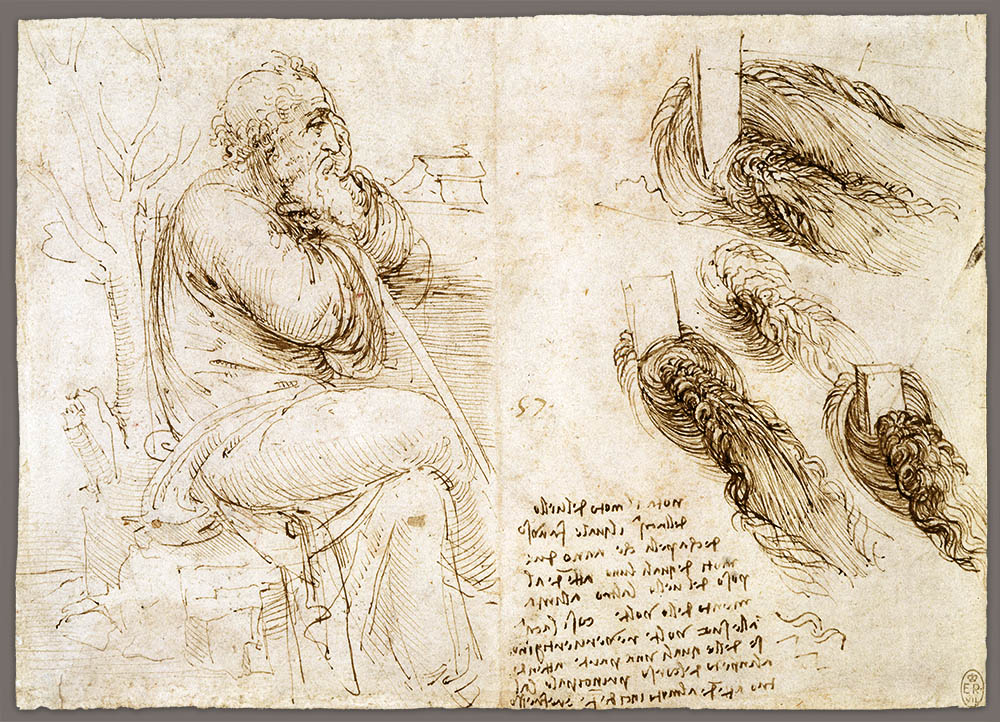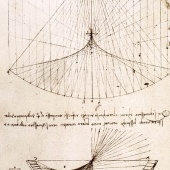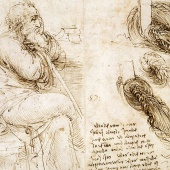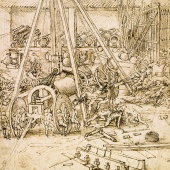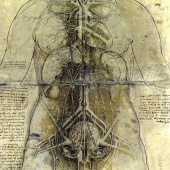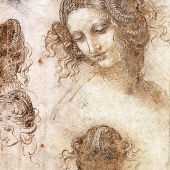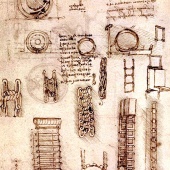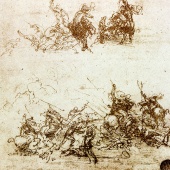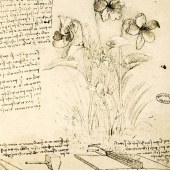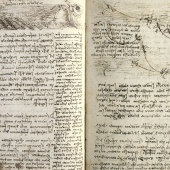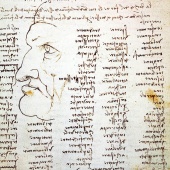Old man and studies of swirling water
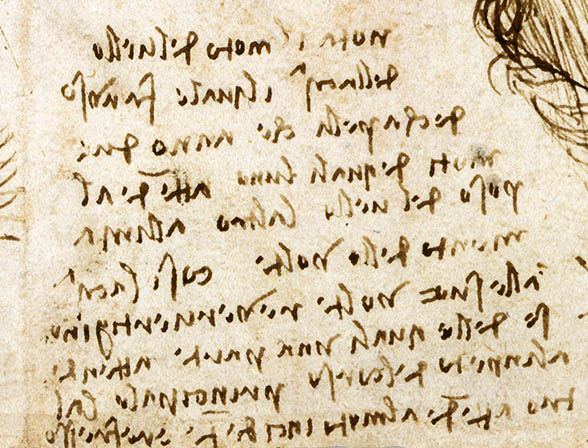
Observe the motion of the surface of the water which resembles that of hair, and has two motions, of which one goes on with the flow of the surface, the other forms the lines of the eddies; thus the water forms eddying whirlpools one part of which are due to the impetus of the principal current and the other to the incidental motion and return flow.
Manuscripts in the Royal Library, London, Windsor Castle.
Successively owned by the sculptor and book lover, Pompeo Leoni, the leading English collector, Lord Arundel, who purchased them in Spain and by the painter, Peter Lely, they entered the collection of Charles 1st of England in the second half of the 17th century. "This precious curiosity" disappeared during the English civil war before reappearing in the mid-18th century at Kensington Palace in a "large and sturdy chest", as recorded in a document of the time. Around 600 drawings cover the period 1478 to 1518. They are now grouped together by theme, landscapes and nature, animals, portraits and anatomy.
Quill and ink, 15.2 x 21.3 cm
Windsor Castle, Royal Library, RL 12579 r.
This wise yet disillusioned old man could be Leonardo. What might he be contemplating? According to the text, swirling water created by obstacles in a water course. Leonardo observed that water and a head of hair have a similar structure on the surface and in depth. This type of comparison enabled description of objects, elements or physical phenomena by observing similarities and differences. Leonardo took this same approach to water and air.
